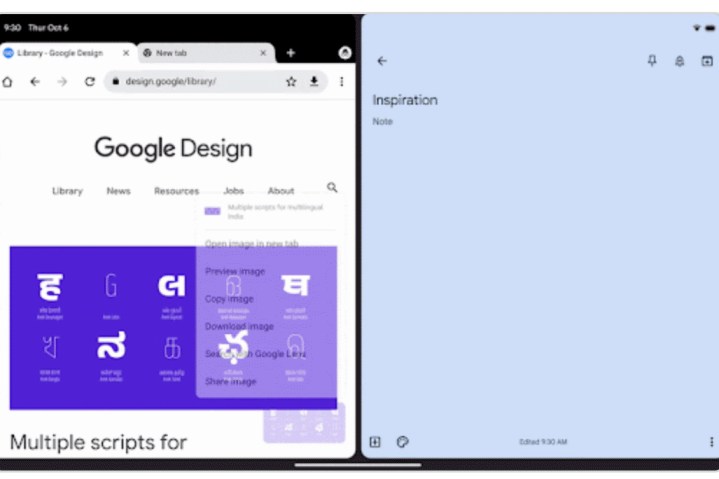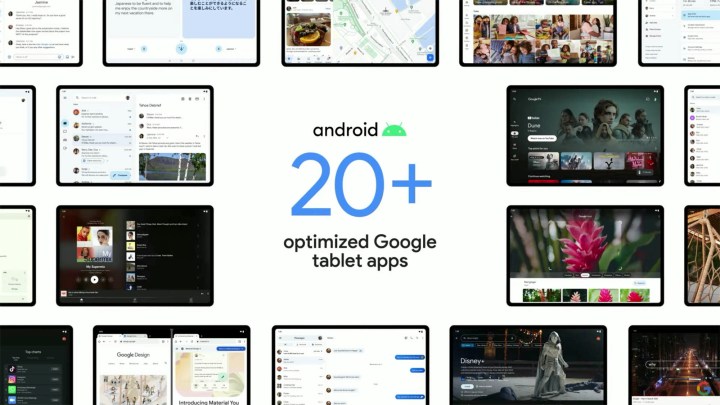Google today announced the release of its redesign for the Chrome app on Android tablets. After long being neglected on the big screen, especially in comparison to Apple’s or Samsung’s browsers, Google says it’ll be rebuilding the browser to help you get work done faster with a tablet or other large-screened device.
These updates can be broken down into design and functionality improvements, and we’ll be kicking things off with the redesign. The first change adds a new side-by-side design when using Chrome paired with another app. This comes with an auto-scroll back feature so you can swipe between tabs, hiding the close buttons when your tabs are too small to prevent mis-taps — plus the inclusion of a restore feature.

Google is also giving the option of using a visual grid of tabs rather than the horizontal tab strip. You’ll now have the option to view all your tabs as a visual grid. The company says it helps find tabs much faster especially compared to poking and prodding at the little tab strip at the top.
Google is also adding in typical desktop features like drag and drop, tab grouping, and desktop mode. Drag and drop and tab grouping both work exactly as they do on laptops. As for Desktop mode, while it already exists on Chrome for Android, the new change is that you’re able to force the browser to run in desktop mode at all times. It should make those who own something like Samsung’s Tab S8 Ultra very happy.
In summary, the new Chrome app wants to be more like a full desktop app, and Google points out that it’s ready for the Pixel Tablet when it drops. With the company’s Android 13 being focused on making the
Other apps are coming

Google isn’t stopping with the Chrome app, though. Other
Still, Google needs more than a fresh rollout of updates to restore faith in its tablet ambitions. The company is notorious for making U-turns at the drop of a hat. Chromebooks were the future last year; now it is
Editors' Recommendations
- A new Google Pixel Tablet is coming, but it’s not what you think
- Why you need to be excited about the Google Pixel 8a
- The 6 biggest announcements we expect from Google I/O 2024
- Google just released the first Android 15 beta. Here’s what’s new
- Whatever you do, don’t buy the Google Pixel 7a right now


